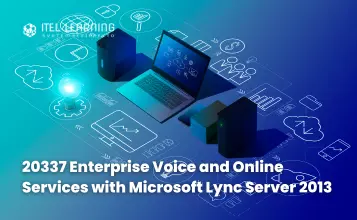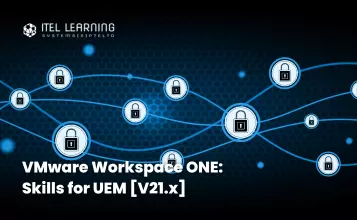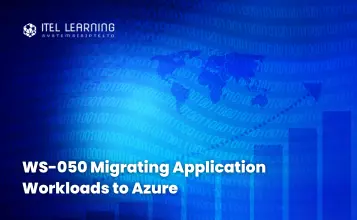Overview
In this course we discuss the tasks needed to fulfill the role of developer in Dynamics 365 Finance and Operations Apps. The Dynamics 365 Finance and Operations apps developer is a key technical resource that implements and extends the application to meet the requirements of the business.
Course Duration
5 Days
Course Outline
- Discover enterprise resource planning (ERP)
- Review Dynamics 365 use cases
- Exercise: Navigate the finance and operations apps
- Finance and operations apps and associated apps
- Finance + Operations on-premises and cloud-based finance and operations apps
- Development and deployment processes
- The user interface
- Reporting capabilities
- Microsoft programs to help customers
- Microsoft cloud
- Cloud concepts
- Architecture differences to consider
- Operational differences to consider
- Differentiate cloud and on-premises architecture
- Elements, models, and packages
- Application components and architecture
- Metadata management processes
- Source control processes
- Conform code to organization policies
- Overview of Lifecycle Services
- ALM methodologies
- Design and create models
- Plan the build, test, and quality control processes
- Plan the release, change, and risk management processes
- Perform support tasks
- Provision and manage environments
- Manage asset libraries
- Manage the code update process
- Create and build projects
- Manage metadata by using the Application Explorer
- Build deployment packages
- Synchronize data changes with the database
- Use the Element Designer to create elements
- Lab – Create a project and add an element
- Configure Visual Studio to connect to Azure DevOps
- Working in Visual Studio
- Manage and perform code reviews
- Extended data types and element properties
- Base enums and element properties
- Lab – Create a base enumeration, add elements, and update properties
- Create tables and table fields
- Populate table and field properties
- Add fields, field groups, indexes, and relations
- Table methods
- Lab – Create a table, add fields, and create field groups
- Add a table extension to a project
- Add a form extension to a project
- Lab – Extend a form and add controls
- Add a new form to a project and apply a pattern
- Add a data source to a form
- Add grids, fields, and groups to a form
- Form methods
- Create and populate menu items
- Test form functionality and data connections
- Diagnose and optimize client performance
- Optimize form loading and performance
- Lab – Create a form
- Add a class to a project
- Add code and methods to meet business requirements
- Data manipulation
- Lab – Insert records by using a runnable class
- Customization models
- Extension points for frameworks
- Develop code to extend a framework
- Implement the SysOperationSandbox framework
- Lab – Extend an EDT
- Manage menus: Favorites
- Manage menus: Dashboards by role
- Manage menus: Key performance indicators
- Manage forms: Fields
- Manage forms: Filters and ranges
- Configure reports
- Exercise – Create favorites
- Exercise – View role-based dashboards
- Exercise – Change form fields and queries
- Exercise – Change report output
- Design KPIs
- Create drill-through workspace elements
- Create custom reusable report functions by using RDL
- Implement built-in KPIs, charts, and other reporting components
- Exercise – Create a workspace and add a tile, list, link, and Power BI element
- Implement base types and operators
- Common structured programming constructs of X++
- Use X++ to write SQL statements
- Use conditional and iterative statements
- Exception handling
- Use const values
- Use X++ runtime functions for common tasks
- Call .NET libraries by using X++ code
- Explore inheritance and abstract classes
- Use attributes
- Implement Chain of Command
- Implement X++ scoping and access identifiers
- Interfaces
- Exercise – Create an extension by using Chain of Command
- Implement Business document management
- Create and modify reports that use SSRS
- Implement query objects and query builder
- Create and modify reports by using Power BI
- Create and modify reports by using Excel
- Exercise – Create and deploy a report
- Import and export APIs
- Monitor the status of APIs
- Manage entity change tracking
- Create wrapper classes to consume external web services
- Create wrapper classes with C#
- Unit test framework
- Acceptance test library
- Task recorder
- Best Practices tool
- Identify various categories and types of errors
- Configure the testing environment and prepare data
- Run unit tests
- Document and fix issues
- Create user acceptance test libraries
- Record test cases and save to BPM
- Synchronize and configure your test plan in Azure DevOps
- Run user acceptance tests
- Data task automation
- Exercise – Build test scripts to test business functionality
- Create and modify report data sources and supporting classes
- Implement reporting security requirements
- Publish a report
- Lab – Set authorization requirements on database tables
- Reporting and Power BI analysis
- Reporting options
- Data export components
- Modernize your data warehouse
- Modernize your analytics and reporting
- Select an integration API
- Synchronous and asynchronous patterns
- Data integration scenarios
- Develop an entity and enable it for data export
- Implement custom services
- Expose OData endpoints from data entities
- Consume external web services
- Integrate finance and operations apps with Microsoft Excel
- Integrate finance and operations apps with eternal applications by using Power Apps
- Download electronic document interchange solutions
- Verify source and target data for auditing
- Debug with JSON Web Tokens
- Set up a data project and recurring data job
- Exercise – Create a data project and recurring data job
- Implement authorization to support integration
- Monitor status and availability of entities
- Develop data transformation
- Microsoft Dataverse integrations
- Work with composite data entities
- Azure Data Lake and Entity Store
- Change data in Azure Data Lake
- Power Platform convergence
- Connect your finance and operations apps data using Power Automate
- Connect to your finance and operations apps data with Power Apps
- Finance and operations data on Common Data Model and Microsoft Dataverse
- Dual-write implementation workshop overview
- Prepare for the workshop
- Workshop implementation and follow-up
- Data management concepts
- Use data entities for data management and integration
- Work with the Data management workspace
- Using Standard and Enhanced views for tiles
- Use templates in data management
- Export, import, and copy data into a legal entity
- Lab – Explore the Data management workspace
- Lab – Export data using the Data management workspace
- Database movement operations
- Diagnose performance issues by using Trace parser
- Load testing by using the Performance SDK
- Monitor performance by using SQL Insights
- Create a SQL trace by using the SQL Profiler
- Monitor server health metrics in Lifecycle Services
- Create and modify duties, privileges, and permissions
- Enforce permissions policy
- Extensible data security framework
- Apply security permissions
- Lab – Create a new security role and add duties
- Understand the security architecture
- Encryption in finance and operations apps
- Manage users and security
- Set up and apply segregation of duties
- Run security reports
- Stay compliant with user licensing requirements
- Security diagnostics for task recordings
- Extensible data security policies
- Exercise – Import a user and assign security role
- Lab – Work with security
- Identify and apply caching mechanisms
- Optimize temporary table usage
- When to use set-based statements and row-based operations
- Query optimization principles
- Modify the scope of a variable
- Analyze and optimize concurrency
- Apply parallel processing algorithms
- Implement the Async framework
- Develop Windows PowerShell scripts








